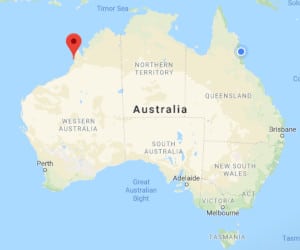Blue Salmon


Mark Bantich
Local Fishing Personality
Mark is a personal friend and long-time fishing tragic who has taught Greg a ton about lure and fly fishing. Residing in Broome, Mark takes every opportunity to fully explore the remote Kimberleys and the fishing the region offers. Mark was the owner and editor in chief of the former Fly Angler magazine and is competent both with lure and fly in any northern Australian scenario.
Mark’s Top Tips For Blue Nosed Threadfin
- Blue-nosed Threadfin (aka Blue Salmon) are a fantastic shore-based option for northern anglers. They are prevalent, hard fighting and taste great.
- This species typically hunts in the shore wash and shallow gutters only a few inches deep. Anything deeper than knee deep is probably getting too deep for them.
- Broome has massive tidal ranges, so at low tide, spend some time driving the beaches looking for the shallow gutters and depressions in softer sand and mud that is home to polychaete worm and other food. These are the areas that will hold blue salmon when the tide comes in.
- A good pair of polaroids and a cleaning cloth are critical tools of the trade. Don’t be in a hurry to fish, if you slow down and just watch for a while these fish will reveal their location. Look for shadows, fin and tail twitches or nervous bait fish for an indication of where to cast.
- Blue salmon are aggressive hunters and it’s rare that they won’t take a well presented lure. The main trick is knowing where to find the fish – and remember that “hope is not a strategy”. Go with a plan and be very intentional. Make every cast count, rather than just aimlessly shooting out casts.
- On the big tides, the areas to the south of Broome fish very well on a high tide. On the smaller neap tides, areas to the north tend to fish better.
- During the day use small stickbaits, poppers or shallow running hard bodies in the 70-120mm size range, working them reasonably quickly through areas where fish are working.
- At night you’ll do better with a stickbait from 200-280mm long, worked as slowly as possible over areas you’ve previously identified as likely to hold fish, especially if you can see signs of bait activity. Night catches tend to be fewer in number, but a much better size of fish.
- Mark likes to travel light and during the day will typically carry just 2 black/gold and 2 white or silver stickbaits. Bluenose threadfin can always be caught on this limited lure selection, you may just need to experiment a little with retrieve styles. Mark uses the black or gold lures in dirtier water and the white lures in clear water.
Mark’s Tackle For Blue Nosed Threadfin
-
Bluenose threadfin tend to be hard but clean fighters, so tackle selection is more about the by-catch, which can include small trevally, queenfish, threadfin salmon, barramundi and mangrove jack. At night northern mulloway (black jewfish) are also a possibility.
-
For day fishing in clear water: a 6-8 foot spin rod coupled with a 2000 to 4000 size reel, 250m of 20lb braid and a 40lb nylon or fluorocarbon leader.
-
For day fishing in dirtier water it’s best to step the line up to 30lb with a matching rod, as the chances of a barramundi or threadfin salmon by-catch increase.
-
At night Mark uses a 12-14ft surf rod, 10000 size Shimano Stella reel and 50lb braid. This combination can handle the large lures and the much higher chance of a bycatch of barramundi or black jewfish, but also keeps the braid out of the water and makes working the lures easier.

0 Comments